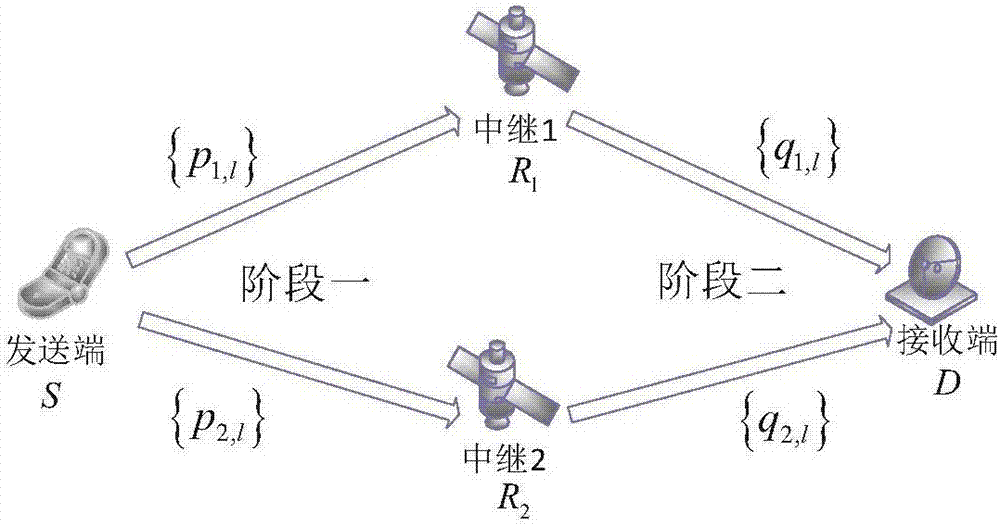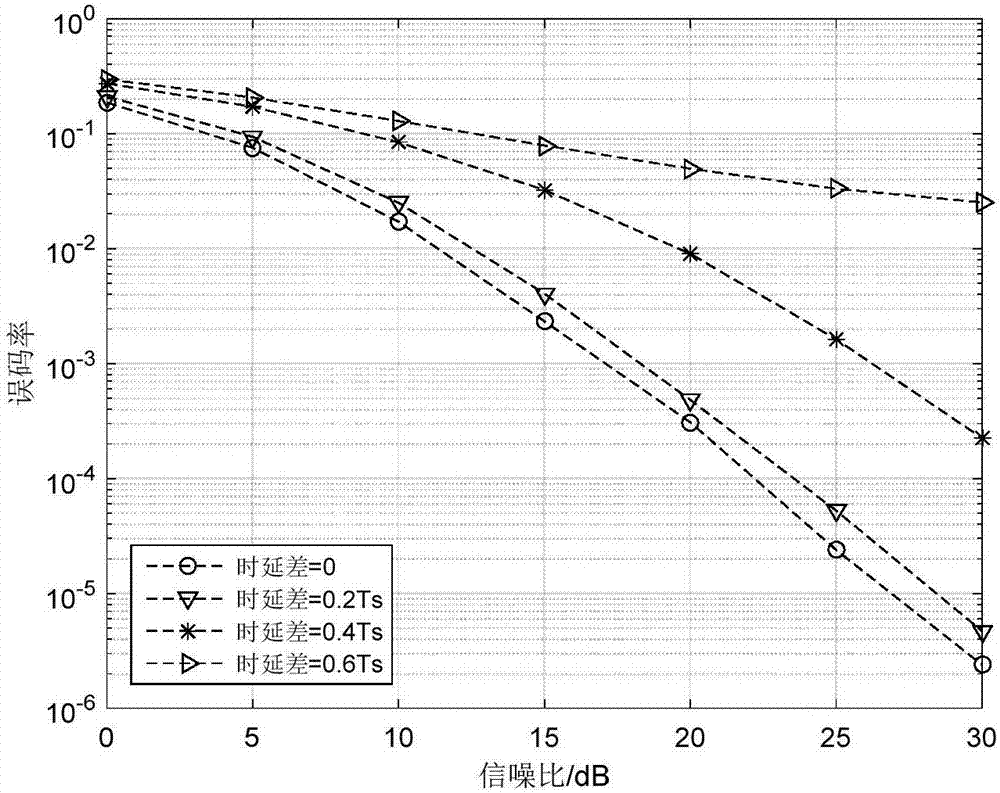Differential space-time coding and orthogonal frequency division multiplexing encoding method for LEO system based on double sampling
A technology of orthogonal frequency division and encoding method, which is applied in the field of differential space-time orthogonal frequency division multiplexing based on double sampling, and can solve problems such as large complexity, inaccurate sampling value, and intersymbol interference
- Summary
- Abstract
- Description
- Claims
- Application Information
AI Technical Summary
Problems solved by technology
Method used
Image
Examples
Embodiment Construction
[0083] Embodiments of the present invention will be described in detail below in conjunction with the accompanying drawings and attached tables.
[0084] figure 1 It is the system model diagram in the case of double LEO satellite relay. The system in the figure consists of a transmitter S, two relay satellites R 1 , R 2 and a receiving end D, the nodes in the system are all single-antenna structures, and the transmission mode is half-duplex. S first encodes the signal and broadcasts it to R 1 , R 2 , each relay performs space-time coding processing on the received signal and forwards the signal to D using the Amplify and Forward protocol (AF). There is no direct signal at the two ends of the ground during the whole process.
[0085] figure 2 A diagram of the improved double-sampling receiver model. The sampler has two sampling points to sample the signal in one symbol period, and the receiving end is at the symbol rate 0,±T s ,±2T s ,…while timing sampling at ±T s / ...
PUM
 Login to View More
Login to View More Abstract
Description
Claims
Application Information
 Login to View More
Login to View More - R&D
- Intellectual Property
- Life Sciences
- Materials
- Tech Scout
- Unparalleled Data Quality
- Higher Quality Content
- 60% Fewer Hallucinations
Browse by: Latest US Patents, China's latest patents, Technical Efficacy Thesaurus, Application Domain, Technology Topic, Popular Technical Reports.
© 2025 PatSnap. All rights reserved.Legal|Privacy policy|Modern Slavery Act Transparency Statement|Sitemap|About US| Contact US: help@patsnap.com



